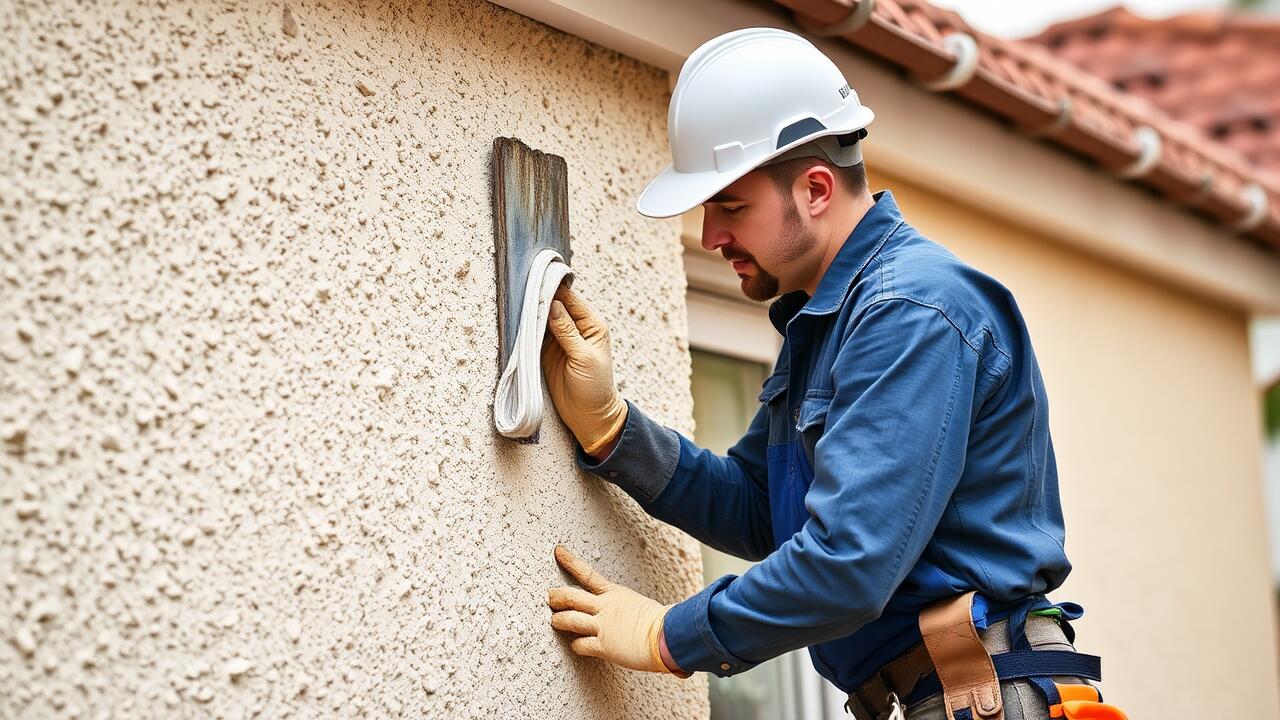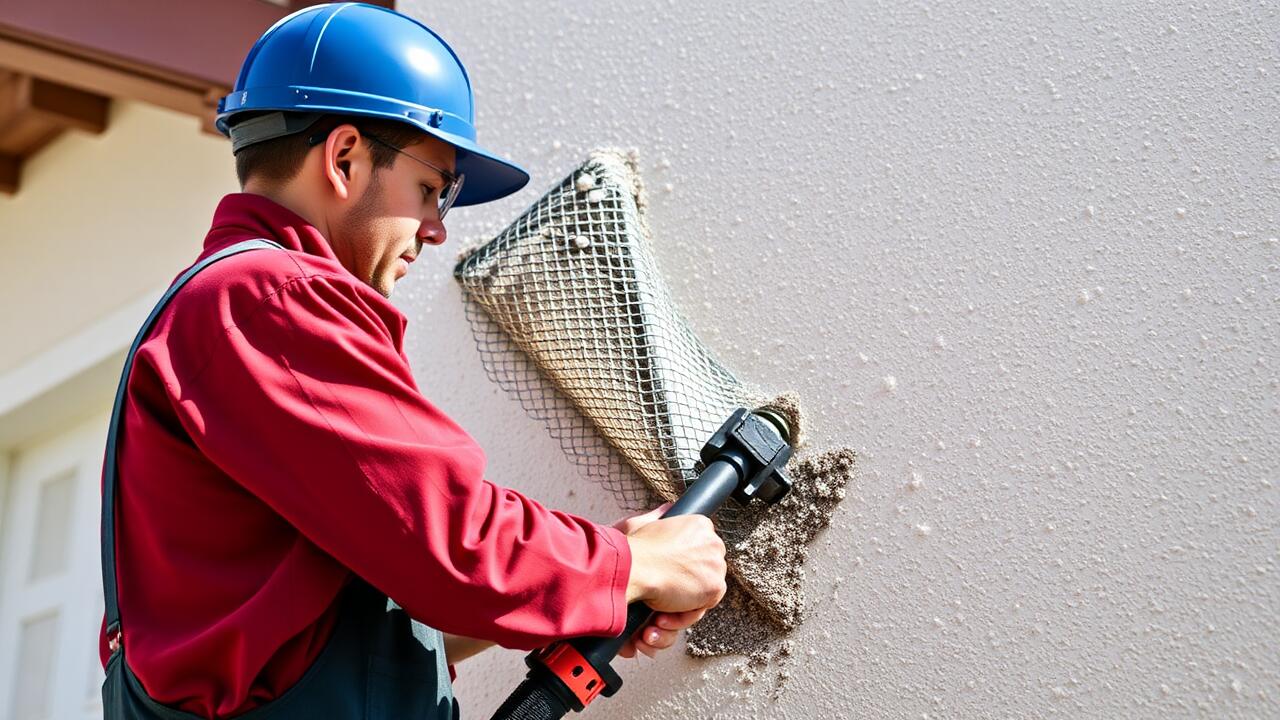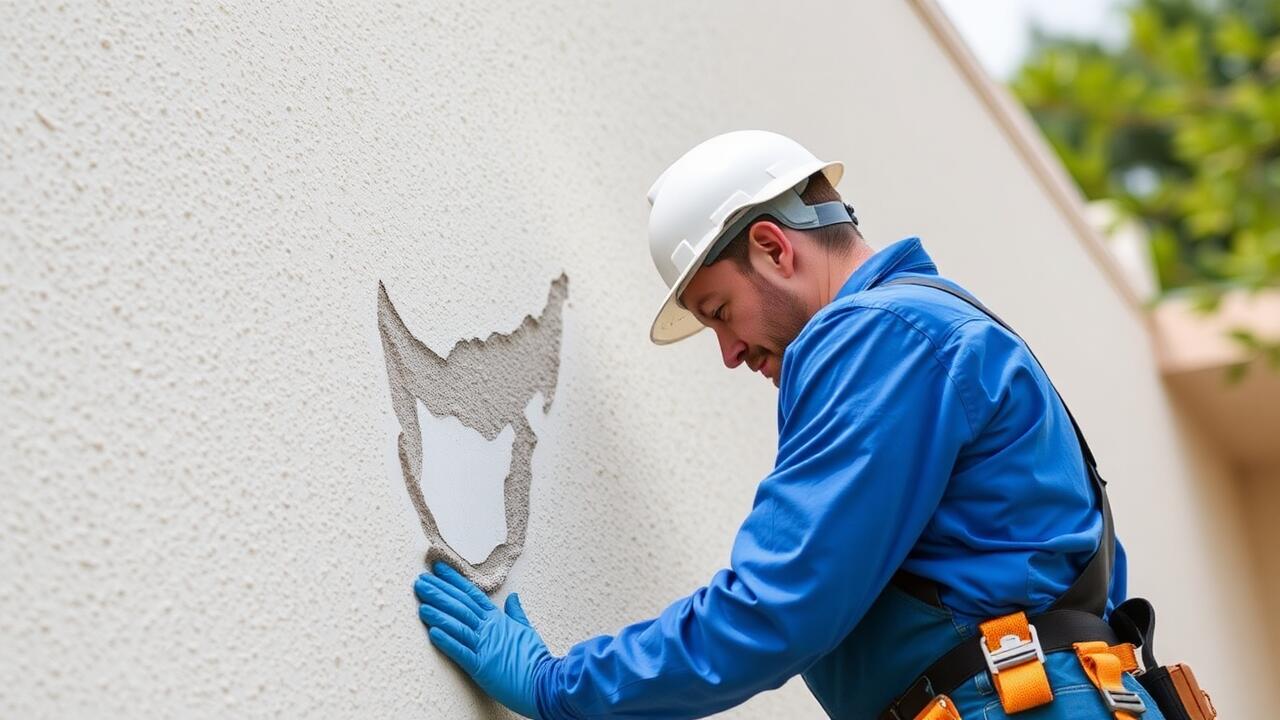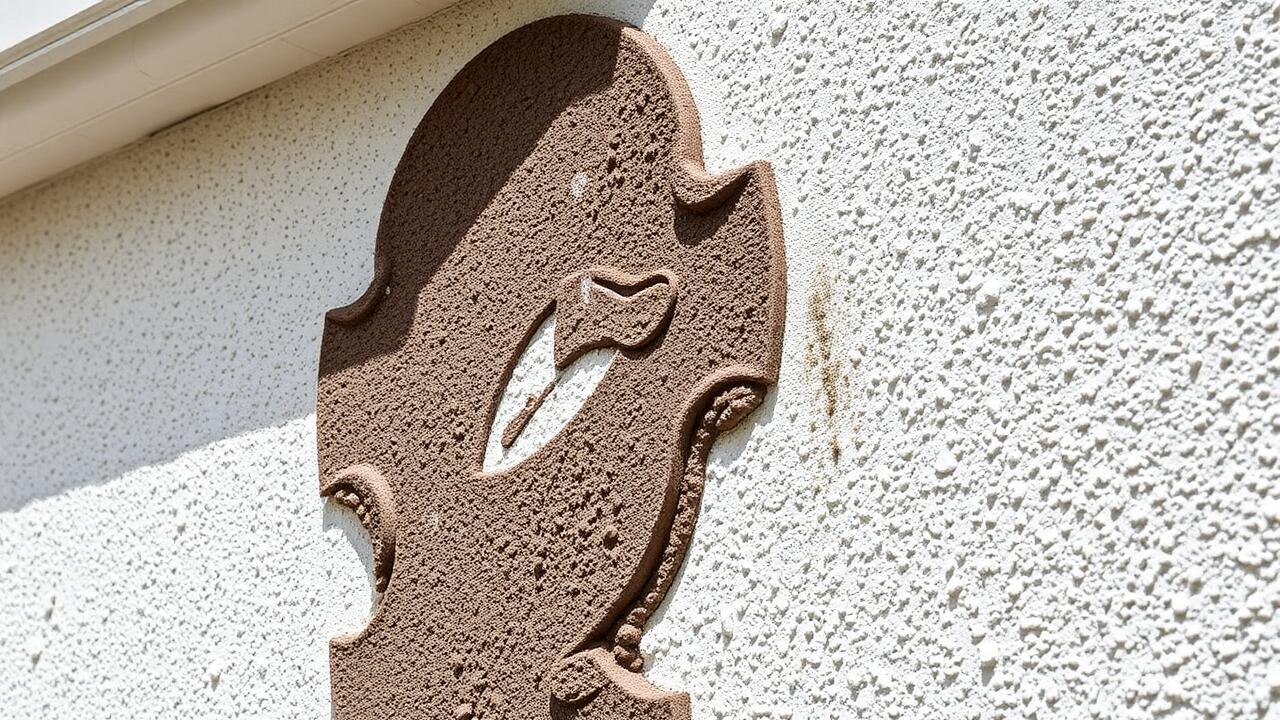
Finishing the Surface
Once the crack has been properly filled and the patch has dried, it's time to finish the surface of the repair. Start by using a trowel to smooth out the patch, blending it seamlessly with the surrounding stucco. Make sure to feather the edges of the repair to create a uniform appearance. The success of your repair largely depends on how well you can match the texture and finish of the existing stucco. A little practice and attention to detail will go a long way in ensuring a professional-looking result.
When it comes to Stucco Repair in Studio City, Los Angeles, attention to texture options can significantly enhance the overall aesthetic. Depending on the original finish of your stucco, you can choose to replicate a specific texture—like dash, skip trowel, or smooth. A variety of tools, such as brushes or sponges, can help achieve these different textures. Experimenting on a small, inconspicuous area before you tackle the repair can provide confidence in your chosen method and lead to a more successful final appearance.
Texturing Options for a Seamless Look
When finishing a stucco repair, achieving a seamless look is essential for blending the new application with the existing surface. Various texturing techniques can help you match the surrounding area, making the repair less noticeable. If your stucco has a rough, sand-like texture, consider using a brush or sponge to replicate this finish. For smoother surfaces, a trowel can create a flat appearance. Experimenting with different tools and methods before the final application can lead to the best results.
Stucco repair in Studio City, Los Angeles, often involves imitating the local architectural styles and textures that are prevalent in the area. Some homeowners may prefer a more traditional stucco finish, while others might choose a decorative pattern for added character. Stamping or stippling techniques can give the repaired section a unique flair. It is advisable to take samples of various textures to compare before proceeding, ensuring that your finished repair maintains the aesthetic integrity of the home.
Curing the Repair
After completing the repair work on your stucco, proper curing is essential to ensure the integrity of the patch. Curing allows the material to bond effectively with the existing stucco, reducing the risk of future cracks and ensuring a smooth finish. For optimal results, maintain a consistent level of moisture around the repaired area. Light misting with water can help keep the repair damp without oversaturating it.
In Studio City, Los Angeles, climate conditions may greatly influence the curing process. During warmer weather, repairs may dry too quickly, leading to potential issues. It’s advisable to cover the area with a damp cloth or plastic sheeting to control evaporation and extend the curing period. Following these practices not only enhances the durability of your stucco repair but also prepares it for the subsequent steps of painting and sealing.
Best Practices for Allowing Proper Drying Time
Allowing sufficient drying time is crucial for successful stucco repair. After applying the patching material, it is important to keep the area free from moisture. Plan your repairs during a dry period to ensure optimal conditions. If rain or excessive humidity is forecasted, consider delaying your project.
In areas like Studio City, Los Angeles, temperatures can vary significantly. High temperatures may accelerate drying, but this can lead to cracks if the material dries too quickly. Moderate temperatures are ideal for a thorough cure. Monitor the weather and adjust your repair schedule accordingly to achieve the best results.
Painting and Sealing
After the stucco repair has dried completely, it's time to apply paint and sealant to enhance and protect the surface. Choosing the right paint is essential, as it should be specifically formulated for exterior stucco. Opt for a quality exterior acrylic latex paint, which offers durability and flexibility. This helps prevent future cracking and fading from sun exposure. Ensure the surface is clean and free of dust or debris before painting, and consider using a primer for better adhesion.
Sealing the stucco is another important step in the maintenance process. A high-quality stucco sealant can provide additional protection against moisture and weather damage, making it particularly beneficial in regions like Studio City, Los Angeles. This sealant should be applied after the paint has dried completely. Using a sprayer or roller can help achieve an even coat. Regularly inspecting and maintaining the paint and sealant can prolong the life of your stucco and keep it looking fresh and appealing.
Enhancing and Protecting Your Stucco
Once the repair work is complete and the surface is properly cured, enhancing and protecting your stucco is vital for longevity and aesthetics. Applying a high-quality paint specifically designed for stucco helps to create a durable finish that withstands varying weather conditions. Choosing a color that complements the architecture of your home can elevate its curb appeal while providing an extra layer of protection against moisture and UV rays.
In addition to painting, sealing the stucco adds another measure of defense. A breathable sealant allows moisture to escape while preventing it from penetrating the surface. This is particularly important in regions like Studio City, Los Angeles, where temperature fluctuations can lead to cracking if the material is not adequately protected. By investing in proper enhancements and seals, homeowners can ensure their stucco remains attractive and structurally sound for years to come.
FAQS
What materials do I need to repair cracked stucco?
You will typically need a stucco patching compound, a trowel, a putty knife, a sponge, a brush, and any necessary texturing tools depending on your desired finish.
How do I know if my stucco is cracked enough to require repair?
If the cracks are wider than 1/8 inch, deep, or there are multiple cracks present, it's advisable to repair them to prevent further damage. Additionally, if you notice moisture seeping through, it’s important to address the issue promptly.
How long does it take for stucco repairs to cure?
The curing time for stucco repairs can vary, but it generally takes about 24 to 48 hours for the patch to fully set. However, it's best to wait at least a week before painting or sealing for optimal results.
Can I paint over repaired stucco immediately after it dries?
No, it's essential to allow the repaired area to fully cure for at least a week before painting. This helps to ensure proper adhesion and a smooth finish.
What should I do if my stucco cracks keep reappearing?
Persistent cracking may indicate underlying issues such as foundation problems or poor drainage. In such cases, it’s best to consult a professional to assess and address the root cause of the problem.



